Flying dinosaurs represent a critical link in understanding the evolution and diversification of modern birds. Although these creatures lived hundreds of millions of years ago, their fossilized remains provide paleontologists with invaluable insights—not only about evolutionary patterns, but also about ancient climates, geological formations, and ecosystems.
In this article, we’ll explore the most important types of flying dinosaurs, their names, physical features, and differences from other flying reptiles like pterosaurs, which were the first vertebrates capable of flight.
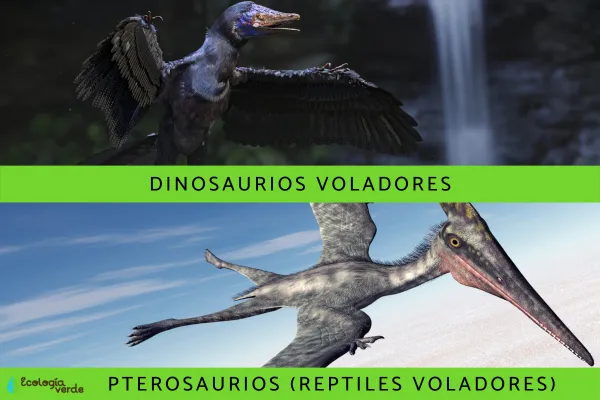
Dinosaurs are a group of vertebrates that belong to the class Sauropsida and first appeared during the Triassic period, around 250 million years ago. They are divided into two primary orders:
Although their name means “bird-hipped,” modern birds do not descend from this group. In these dinosaurs, the pubic bone pointed toward the tail, resembling that of birds. All ornithischians were herbivorous and were globally distributed. They went extinct at the end of the Cretaceous period, over 65 million years ago.
This order includes both carnivorous and herbivorous species. Unlike ornithischians, saurischians had a forward-pointing pubic bone. Modern birds are direct descendants of a subgroup of saurischians known as theropods.
Through millions of years of evolution, some theropods developed adaptations that allowed for flight:
Hollow Bones: Reduced body weight, aiding in lift.
Three-Toed Limbs: Improved grasp and balance, leading to wing evolution.
Feathers: Likely evolved from scales and initially used for insulation before becoming essential for flight.
Alula Bone: Formed from vestigial finger bones, still visible in the wings of modern birds.
Keel Bone: An extension of the sternum that anchors flight muscles, essential for powered flight.
Often called the “missing link” between dinosaurs and birds, Archaeopteryx lived around 150 million years ago in what is now southern Germany. Though it retained many dinosaur-like traits, it had feathered wings that allowed for gliding or short flights.
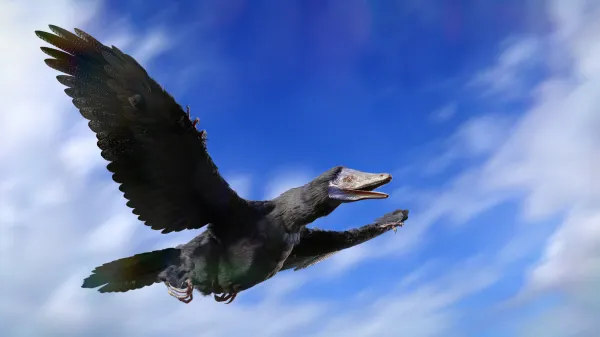
Lived about 160 million years ago in present-day China. Some paleontologists believe it predates Archaeopteryx, possibly making it the earliest known flying dinosaur.

A small, feathered, bipedal dinosaur from late Jurassic Asia. Though not much is known, it likely played a role in bird evolution.
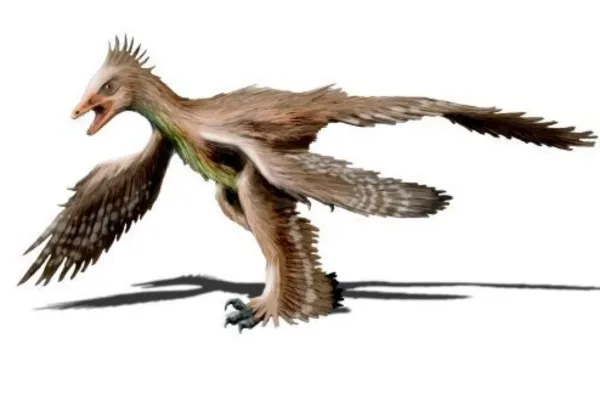
Meaning “almost bird,” this species lived about 155 million years ago in Asia. It had long legs with feathers and well-developed but short wings. Its ability to fly remains debated.
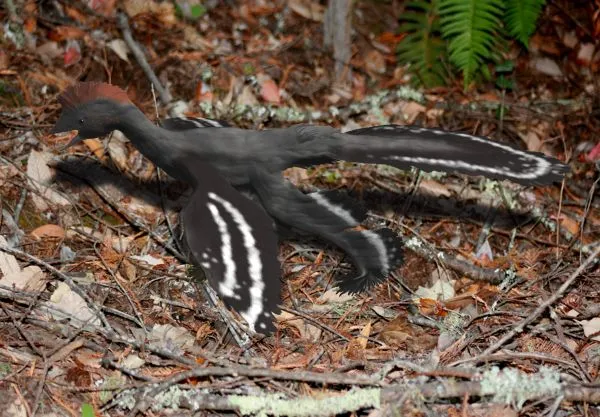
Discovered in Madagascar, it lived about 70 million years ago. This small, feathered dinosaur measured around 70 cm and had a long tail. It’s unclear whether it could truly fly.
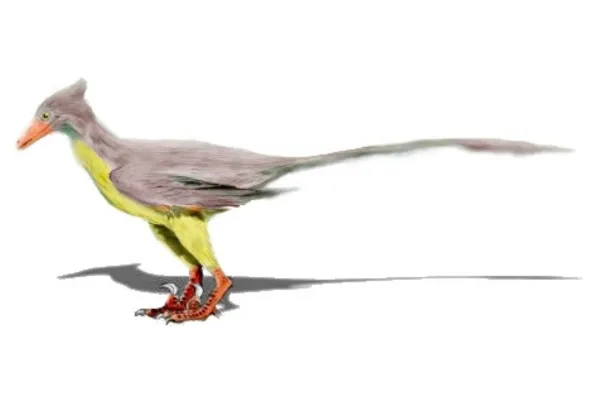
The only known species of its genus, it lived in what is now Europe about 70 million years ago. It was robust and about 2 meters long, with fused bones—a feature also found in birds.
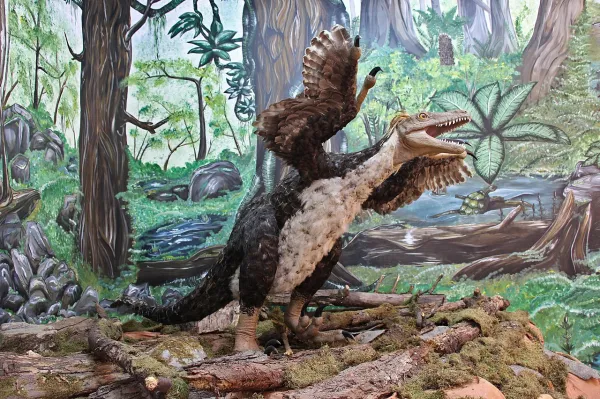
This genus includes M. hanqingi, M. gui, and M. zhaoianus. These small dinosaurs (up to 83 cm long) lived 125–113 million years ago in Asia. Their bodies were covered in feathers, including long ones on all four limbs, suggesting they could actively fly.
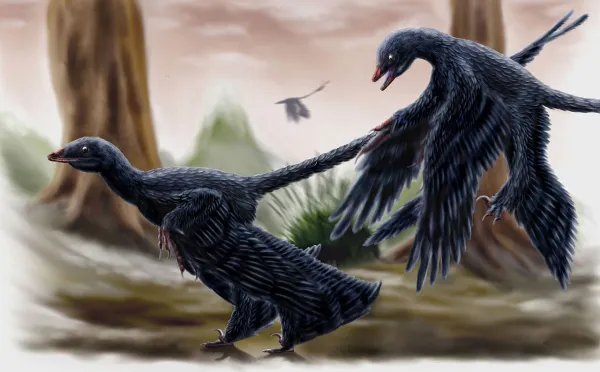
Found in Argentine Patagonia, it lived about 90 million years ago. Although it couldn’t fly actively, it had wing-like forelimbs and a feathered tail likely used for balance or gliding.
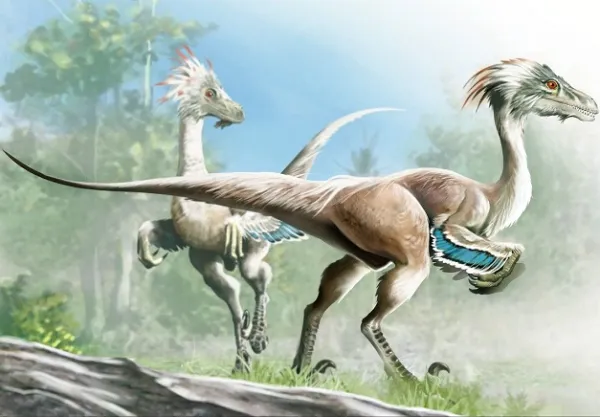
Jeholornis palmapenis
Velociraptor mongoliensis
Sinornithosaurus millenii
Utahraptor ostrommaysorum
Mahakala omnogovae
These dinosaurs further illustrate the diversity of the transition from land-dwelling reptiles to birds.
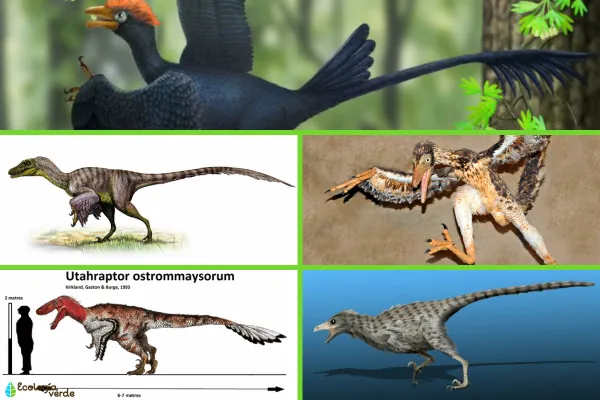
Pterosaurs lived from 220 to 65 million years ago and were the first vertebrates capable of flight. They dominated the skies for 150 million years but were not dinosaurs. Instead, they were flying reptiles with unique anatomical features.
Wing Structure: Pterosaurs had membranous wings supported by an elongated fourth finger. Flying dinosaurs had feathered wings evolved from their arms.
Pteroid Bone: Exclusive to pterosaurs, this bone helped control wing tension and flight.
Habitat: Fossils are often found in marine sedimentary deposits, suggesting many lived near water like modern seabirds.
A medium-sized pterosaur from China with a wingspan of 3.5 meters, a long skull, and a beak.
One of the largest known flying animals. Fossils from Texas indicate a wingspan of 10–11 meters and a weight exceeding 100 kg.
The first flying reptiles ever described. They were medium-sized, with some species reaching 1.5 meters in length. Likely carnivorous, feeding on small animals.
Discovered in Brazil, this fish-eating pterosaur had a body length of 4–5.5 meters and weighed around 15 kg.
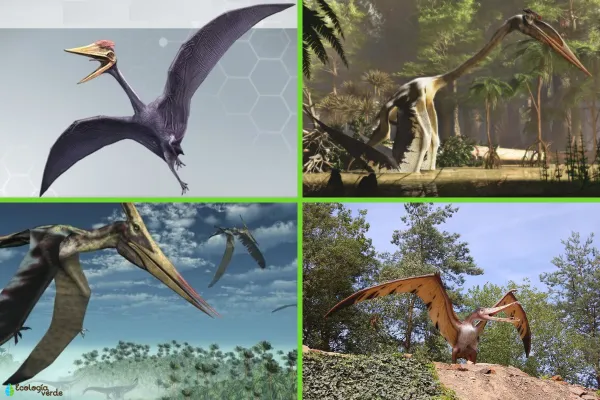
Gnathosaurus spp.
Ornithocheirus spp.
Pterodaustro spp.
Tropeognathus spp.
Rhamphorhynchus spp.
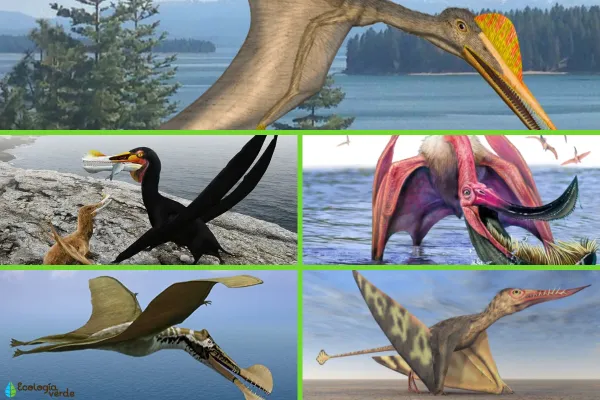
Flying dinosaurs and pterosaurs demonstrate the incredible evolutionary adaptations that allowed vertebrates to conquer the skies. While flying dinosaurs led to the rise of modern birds, pterosaurs were a unique lineage of flying reptiles with their own evolutionary success story.
Bibliography
Díaz Aros, R. (2012). The Origin of the Dinosaurs (Dinosauria: Saurischia-Ornithischia).
Pterosaurs (The Winged Lizards), Reading Review. Retrieved from: https://elementos.buap.mx/directus/storage/uploads/00000001434.pdf
animal tags: flying dinosaurs
We created this article in conjunction with AI technology, then made sure it was fact-checked and edited by a Animals Top editor.